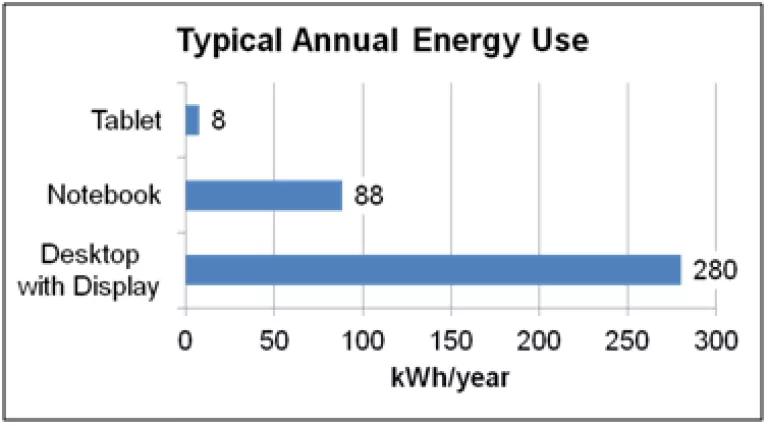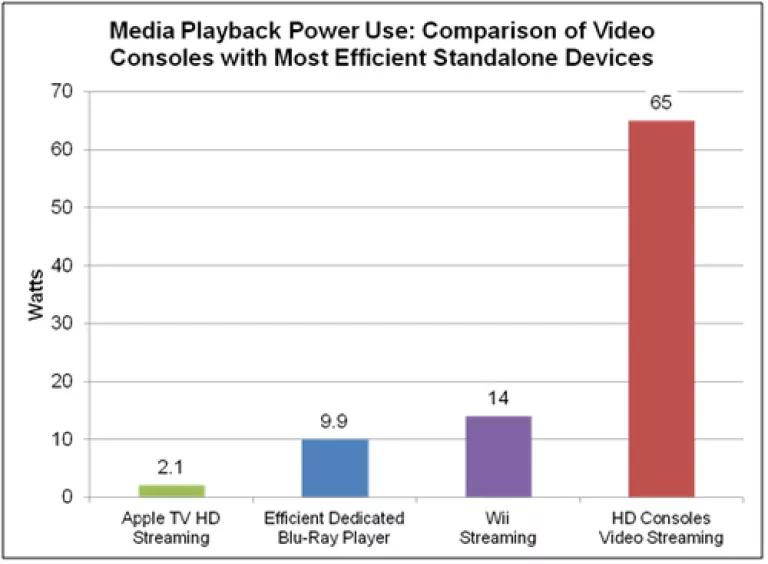Who doesn’t want the latest big screen TV, tablet, laptop computer, smart phone, streaming video box, or game console to give—or receive – this holiday season? With Black Friday looming as the official start of the holiday shopping season, we’ve put together a “Green Electronics Holiday Survival Kit” with tips on how to shop for and use the products that use the least energy, (saving you the most money), and the best way to recycle the older models they’re replacing.
Consumer electronics represent the fastest-growing source of home electricity use, with the typical household containing about 25 gadgets that consume 10 to 20 percent of your electricity bill. Choosing more efficient models can cut your costs, while reducing the nation’s electricity bill by several billion dollars annually and preventing the release of millions of tons of carbon dioxide, the main pollutant responsible for climate change.
Even if you’re not planning any big-ticket electronics purchases this holiday season, a battery charger and a set of AA rechargeable batteries will help save you lots of money and help keep the billions of single use batteries thrown out each year out of the landfill. Or, consider a “kill-a-watt” meter to see how much electricity each of your gadgets uses both when they are in use and in the middle of the night.

If you can remember only one thing, buy models with the ENERGY STAR logo. Because they meet energy efficiency requirements set by the U.S. Environmental Protection Agency, they use less energy than similar models, helping you save money and protect the environment.
Televisions
Just like you see on appliances these days, televisions now must have a yellow Energy Guide label that helps consumers know how much a particular model costs to operate and how its energy use compares to similar-sized ones. In the example below, this 42-inch TV costs $19 per year to operate and consumes 172 kilowatt hours of electricity. Because a new TV lasts around 10 years, buying this model instead of the energy hog could save up to $250 over its lifetime.

1. If you want today’s absolutely most efficient TV on the market, see ENERGY STAR Most Efficient 2012 and the list at Top Ten USA.
2. If you’re interested in streaming videos and accessing “Apps” like Netflix on your TV, purchase an “Internet-ready” model, which will save you considerable amounts of energy (additional details below).
3. If purchasing a LCD TV, buy one with a LED backlight. Marketed as LED TV or LCD-LED TV, they use 15 to 20 percent less energy than models with fluorescent backlights.
Desktops, Laptops and Tablets
Unlike desktop computers and monitors that are viewed as having endless supplies of electricity, laptops/notebooks and tablets are designed to be energy-efficient in order to make the battery last as long as possible, which is great for consumers and the environment.
A tablet such as a 10-inch iPad will use 35 times less energy annually than a decent desktop with 20-inch monitor, and ten times less than a laptop. So consider buying a laptop or tablet instead of another desktop.
When shopping for a desktop computer, laptop or printer, look for models with an “EPEAT” logo, which means the device is not only energy-efficient and meets ENERGY STAR, it contains fewer toxic materials, can be easily disassembled for recycling, etc. For a list of EPEAT qualified models, visit their registry.

Streaming Videos
There are multiple ways to watch a movie on your new big-screen TV, including streaming them directly from the Internet with an Internet-ready TV or through a little black box, such as Apple TV or a Roku Box, or via your video game console or computer. As the chart below suggests, avoid using your Xbox 360 or PlayStation 3 game console to stream movies because they require up to 30 times more energy.
HOW YOU USE YOUR DEVICES MATTERS
Once you’ve purchased -- or better yet received -- a new energy-efficient gadget, make sure you pick the best settings as this has a dramatic impact on its energy use. Below are some quick tips to ensure your device operates in an environmentally friendly and frugal manner:
- TVs – When you take your new TV out of the box and switch it on for the first time, you have a choice of settings. For a good viewing experience, pick the “home” or “standard” setting. Choosing a setting like “vivid” or “retail” makes the TV overly bright and consumes 15 to 30 percent more power. Selecting the wrong setting could easily cost an extra $50 to $100 over the TV’s lifetime.
- Video Game Consoles – Sony and Microsoft have been hard at work reducing the energy use of their devices. They’ve added a feature that automatically powers the console down when you are not using it. For it to work, you must ensure this feature is enabled. Otherwise, your device will continue to consume near full levels of power if the user, such as your kid or roommate, forgets to turn off the game console at the same time as the TV. If the game console is never turned off, you could consume as much extra electricity as the annual energy use of a new refrigerator, which is like throwing away $60 a year. Make sure the auto power-down feature is enabled and your box will automatically go into a low-power sleep state after an extended period of user inactivity.

- Desktop and Laptops Computers – Make sure to take full advantage of power management settings. This way your computer will automatically go into sleep mode when you are not using it, and will quickly wake up when you return and shake the mouse, hit a key, etc. Do NOT use a screensaver showing your favorite pet or vacation photos, it prevents your computer from going to sleep and wastes massive amounts of energy. Instead, set the computer to switch off the display screen after a few minutes of inactivity.
REUSE, RESELL and RECYLE
A byproduct of the continuous electronics upgrade is all the older versions we are left with. The EPA says about two million tons of electronic gadgets are discarded each year, but less than 20 percent are recycled. The good news is there are lots of great and easy options that enable us to do better.
- Reuse/Resell – As it takes a lot of energy to make a new device, it’s often better to keep the old functioning consumer electronics product in use, especially when it comes to smart phones, tablets, and laptops. Pass on functioning devices to family or friends, or take advantage of buyback programs offered by retailers such as Radio Shack and Walmart.com and a slew of websites for small electronics.
- Recycle – If your old device no longer works or is an energy hog like the older plasma TVs or a CRT monitor, it’s best to permanently get it out of circulation. To make sure your e-waste is recycled properly, take it to a recycler that is certified as an e-Steward. This may sound like a hassle, but Best Buy will accept your waste electronics, including TVs, at all their stores. They will do this for free regardless of where they were purchased, and they only use e-Steward recyclers. Kudos to Best Buy for their longstanding leadership in this area. Staples has a similar recycling program, but does not accept old TVs. In addition, Waste Management often operates local e-waste recycling programs and adheres to e-Steward requirements.
This holiday season, remember to go green to save green.



